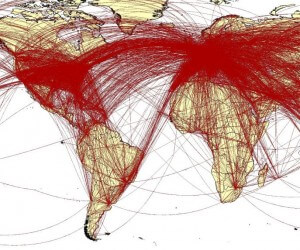New tool helps airports track illnesses

The next time a disease like SARS threatens to bedevil large numbers of people around the world, airports will have a new tool to prevent the epidemic. Transportation officials and public health experts are now testing a new website that will calculate the risk of passengers arriving on any flight carrying a new infectious disease. The online tool for airborne disease risk assessments (VBD-AIR) was developed by a team of researchers at the University of Florida with funding from the Transportation Research Board of the US National Research Council. The tool uses air transport data, disease risk maps and climate data.
Those in charge of the subject can enter into the system the name of the airport they are following, the month and the name of the disease. Currently, the system only includes diseases transmitted by mosquitoes, such as dengue fever, malaria, yellow fever and chikungunya, a tropical disease that was discovered in Florida a few years ago. The output is a network of lines, coded in different colors according to the degree of risk and representing flights arriving at the destination from all over the world.
If a traveler arrives at an airport in need of medical assistance or ends up in a hospital near the airport, those in charge must be able to quickly assess the situation before it worsens, says Andrew Tatum, a professor in the Institute of Emerging Diseases and Department of Geography at the University of Florida, who participated in the development the plan. The VBD-AIR database could help determine a high priority for screening passengers arriving at the airport based on how likely they are to have been exposed to a particular disease and how likely it is to infect others, Tatum adds. The system could also be used as a means of preventing diseases because it could warn passengers to avoid reaching certain areas.
The researchers plan to expand the program and also follow infectious diseases such as the rose of Jericho (which is common in some areas of South America, Africa and the Middle East and is transmitted by the bites of sand flies), the Syrian-African rift fever (RVF, which was discovered in Kenya but is now common in other parts of Africa and the Middle East) and Chagas disease (usually transmitted by insects found in South and Central America).
